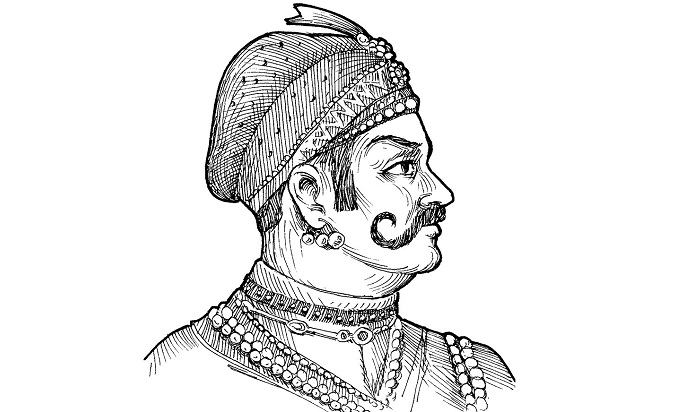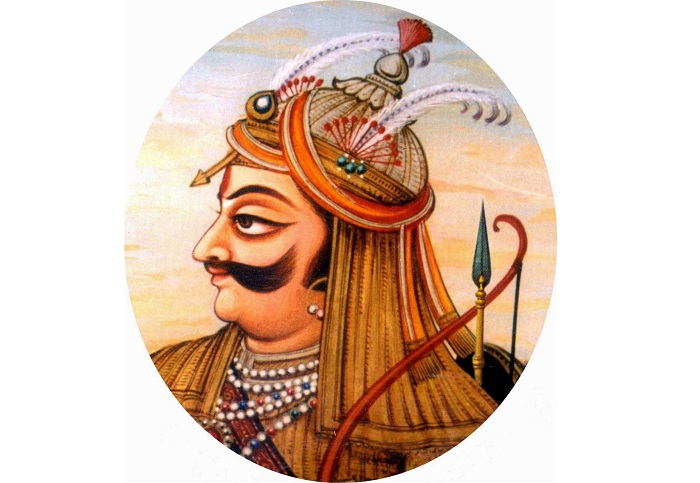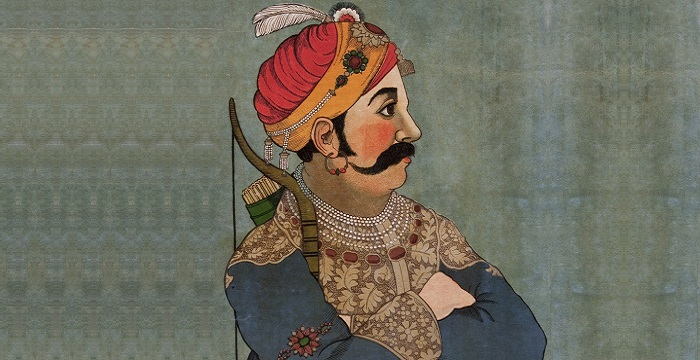Fast Facts
Birth: c. 1166 CE
Place of Birth: Gujarat
Death: 1192 CE
Place of Death: Ajmer
Children: Govindaraja IV
Dynasty: Chahamanas of Shakambhari
Father: Someshvara
Mother: Karpuradevi
Regnal Name: Prithviraja III
Prithviraja III, famous as Prithviraj Chauhan, was one of the greatest Rajput rulers. He controlled many parts of the present-day Rajasthan, Haryana, Delhi, Uttar Pradesh, and Madhya Pradesh. Known for his valor, Prithviraj Chauhan is often praised as a brave Indian king, who stood up against the invasion of Muslim rulers. He is widely known as a warrior king and is credited for resisting the Muslim invaders with all his might. His defeat at the ‘Second battle of Tarain’ (1192) is considered as a key moment in the history of India as it opened the gates for Muslim invaders to rule the northern parts of India.
Childhood & Early Life
According to the famous eulogistic Sanskrit poem, Prithviraja Vijaya, Prithviraja III was born on the 12th day of Jyeshtha, which is the second month of the Hindu calendar, and corresponds to May – June of the Gregorian calendar. ‘Prithviraja Vijaya’ does not talk about the exact year of his birth. However, it does talk about certain planetary positions at the time of Prithviraj’s birth. The description of these planetary positions later helped Indian Indologist Dasharatha Sharma to calculate the year of Prithviraj’s birth, which is believed to be 1166 CE. He was born to the Chauhan King Someshvara and his queen, Karpuradevi, in the present-day Gujarat.
According to ‘Prithviraja Vijaya,’ Prithviraj Chauhan had mastered as many as six languages. Another eulogistic poem, Prithviraj Raso, claims that Prithviraj was well-versed in many subjects, including mathematics, medicine, history, military, philosophy, painting, and theology. Both Prithviraj Raso and Prithviraja Vijaya state that Prithviraj was well-versed in archery as well. Other medieval biographies also suggest that Prithviraj Chauhan was educated well and was an intelligent boy right from his childhood. They also state that as a kid, Prithviraj displayed keen interest in warfare and was hence able to quickly learn some of the most difficult military skills quite early.

Image Credit : https://en.wikipedia.org/wiki/Prithviraj_Chauhan
Coronation & Early Reign
Prithviraj ascended the throne when he was just 11 years old after the death of his father, Someshvara, in 1177 CE. At the time of his coronation, the young ruler had inherited a kingdom that extended from Sthanvishvara in the north to Mewar in the south. Since Prithviraj was still a minor when he ascended the throne, his mother, Karpuradevi, was made his regent. Karpuradevi, who was assisted by a regency council, managed the administration of the kingdom during Prithviraj’s early years as the king.
During Prithviraj’s early reign, the young king was assisted by a couple of ministers, who find mention in ‘Prithviraja Vijaya.’ The poem states that Chief Minister Kadambavasa was an able administrator, who was devoted to the king. It also states that Kadambavasa played an important role in many of Prithviraj’s victories during the early years of his reign. Another important minister who served in the court of Prithviraj during this time was Bhuvanaikamalla, a paternal uncle of Karpuradevi. Prithviraja Vijaya describes Bhuvanaikamalla as a valiant general.
Conflicts with Hindu Rulers
Soon after assuming complete control of the administration, in 1180, Prithviraj Chauhan was challenged by many Hindu rulers, who tried to exert their influence over the Chahamana dynasty. Some of these rulers who came in conflict with Prithviraj are mentioned below:
Nagarjuna – Nagarjuna was Prithviraj’s cousin and had revolted against the coronation of Prithviraj Chauhan. In an attempt to seek revenge and to flaunt his authority over the kingdom, Nagarjuna had captured the fort of Gudapura. Prithviraj proved his military prowess by besieging Gudapura. It was among the earliest military achievements of Prithviraj.
Bhadanakas – After suppressing his cousin Nagarjuna’s revolt, Prithviraj turned towards the neighboring kingdom of the Bhadanakas. Since Bhadanakas often posed the threat of capturing the area around present-day Delhi, which belonged to Chahamana dynasty, Prithviraj decided to annihilate the nearby kingdom.

Image Credit :https://www.gyandarpan.com/great-hindu-king-prithviraj-chauhan/
Chandelas of Jejakabhukti – According to certain inscriptions in Madanpur, Prithviraj defeated Paramardi, a powerful Chandela king, in 1182 CE. Prithviraj’s victory against the Chandelas increased the number of his enemies and also forced the Chandelas to join forces with the Gahadavalas.
Chaulukyas of Gujarat – Though the conflict between Prithviraj’s kingdom and the Chaulukyas of Gujarat finds mention in history, many references made in Prithviraj Raso seem to be unreliable, given the exaggerated nature of the poem. However, a few reliable sources do mention about a peace treaty between Bhima II of the Chaulukyas and Prithviraj Chauhan, which implies that the two kingdoms were at war.
Gahadavalas of Kannauj – According to a popular legend from Prithviraja Vijaya, Ain-i-Akbari, and Surjana-Charita, Prithviraj Chauhan came in conflict with another powerful king, Jayachandra, who ruled the Gahadavala kingdom. The legend has it that Prithviraj eloped with Jayachandra’s daughter Samyogita (Samyukta) in a rather dramatic manner. Since the incident is mentioned in three reliable sources, historians R. B. Singh and Dasharatha Sharma say that there might be some truth in the story, though it is largely viewed as a mere legend.

Image Credit : https://fairgaze.com/General/prithviraj-chauhan-the-undefeated-warrior-and-patriot_82103.html
Battles of Tarain
A massive territory to the west of the Chahamana dynasty was ruled by Muhammad of Ghor, who wanted to expand his empire towards the east. In order to do so, Muhammad of Ghor had to defeat Prithviraj Chauhan and hence, he waged a war against the Chahamanas. Though many legends claim that Prithviraj and Muhammad of Ghor fought many battles, historians confirm that at least two battles were fought between the two. Since they were fought near the town of Tarain, they later came to be known as ‘Battles of Tarain.’
The First Battle of Tarain
Around 1190 – 1191 CE, Muhammad of Ghor captured Tabarhindah, which belonged to the Chahamana dynasty. Upon learning about the invasion, Prithviraj marched towards Tabarhindah. Both the armies met at a place called Tarain. This battle is called the ‘First battle of Tarain,’ in which Prithviraj’s army defeated the Ghurids. However, Muhammad of Ghor could not be captured as he managed to escape with some of his men.
The Second Battle of Tarain
When Muhammad of Ghor returned to avenge his defeat, most of the Rajput allies had left Prithviraj, because of his conflicts with Hindu rulers. However, Prithviraj still managed to put up a good fight as he had an impressive army. According to several sources, Prithviraj’s camp was attacked at night after Muhammad of Ghor had managed to deceive Prithviraj’s army. This enabled Muhammad of Ghor to defeat Prithviraj’s forces and capture Ajmer, the capital of Chahamanas.
Death
After capturing Prithviraj Chauhan, Muhammad of Ghor reinstated him as a Ghurid vassal. This theory is supported by the fact that coins issued by Prithviraj after the battle of Tarain had his own name on one side and Muhammad’s name on the other. According to several sources, Prithviraj was later killed by Muhammad of Ghor for treason. However, the exact nature of the treason differs from one source to another.
Prabandha-Chintamani – A 14th century Jain scholar named Merutunga has stated in his ‘Prabandha-Chintamani’ that Prithviraj was beheaded when Muhammad came across some of the paintings housed in the Chahamana gallery. Muhammad of Ghor was enraged after seeing the paintings, which depicted Muslims being killed by pigs.
Prithviraja-Prabandha – According to ‘Prithviraja-Prabandha,’ Prithviraj was kept in a building that faced the court, which was now occupied by Muhammad. Prithviraj made secret plans to kill Muhammad and hence asked his minister Pratapasimha to supply him with a bow and arrows. Though the minister gave Prithviraj what he had asked for, he also informed Muhammad about Prithiviraj’s secret plan. Prithiviraj was then thrown into a pit and was stoned to death.
Hammira Mahakavya – According to this source, Prithiviraj refused to eat after his defeat, which ultimately led to his death. Various other sources state that Prithviraj was killed immediately after his defeat. According to ‘Viruddha-Vidhi Vidhvansa,’ the legendary Indian king was killed on the battlefield.

Image Credit : https://www.pinterest.com/pin/481111172663134021/
Legacy
At its peak, the empire of Prithviraj Chauhan extended from the foothills of the Himalayan in the north to the foothills of Mount Abu in the south. From east to west, his empire extended from Betwa River to Sutlej River. This implies that his empire included present-day Rajasthan, western Uttar Pradesh, northern Madhya Pradesh, and southern Punjab. After his demise, Prithviraj Chauhan was largely portrayed as a powerful Hindu king, who was successful in keeping the Muslim invaders at bay for many years. He is also often portrayed as a symbol of Indian power before the beginning of the Islamic rule in medieval India. Prithviraj Chauhan’s heroic achievements have been portrayed in a number of Indian films and television series, such as ‘Samrat Prithviraj Chauhan’ and ‘Veer Yodha Prithviraj Chauhan.’ There are many memorials in Ajmer, Delhi, and other places that honour the chivalrous Rajput ruler.


